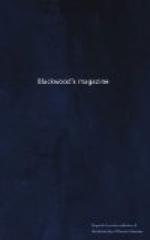style. This style, coldly correct, tame, dull,
flat, and passionless, requires but little in the singer.
The bass of this school is a saltatory creature; he
is, for the most part, either striding through thirds,
or jumping over fifths and octaves, much as he did
a hundred years ago. During this period, the art
of singing has made immense advances elsewhere; the
execution of Farinelli, in 1734, thought so wonderful,
would not suffice for even a third-rate singer now;
and the powers of B. Ferri, described by Rousseau,
are scarcely more than would be expected of every
singer of the Queen’s Theatre. Rossini’s
music, replete with difficulties of execution, has
compelled even the unwieldy bass to overcome his reluctance
to rapid motion, and he is now obliged to condescend
to runs, arpeggios, and other similar feats of agility.
In an opera buffa at a Neapolitan theatre, called
Il
Fondo, we once heard Tamburini execute the well-known
song “Ma non fia sempre odiata” in his
falsetto, with a taste and expression scarcely surpassed
by Rubini’s performance of the air. On another
occasion, at the same theatre, the prima donna was
taken suddenly ill in the midst of a terzetto, in
which Tamburini had the bass, and, while supporting
her on the stage, this accomplished musician actually
took the soprano in his falsetto, and performed the
part of the indisposed lady in a manner which drew
down universal applause. The English school, “still
tardy,” and “limping after” the
Italian, is yet far behind. It has, undoubtedly,
made some advances, but it is still the child,
following
indeed, but,
“Haud passibus
aequis.”
With us, the pupil commonly begins where he should
end; songs are placed before him almost as soon as
he has mastered the elements of music. At a time,
when his whole study and endeavour should be to form
and cultivate the voice, and by long, patient, and
persevering exercise, to develop and command its powers,
and to acquire flexibility and certainty of execution,
his efforts are expended in learning—as
it is called—songs. This process may
be carried on ad infinitum; but none of the
objects of the pupil’s study can be ever sung,
in the real acceptation of the term, on this method
of instruction. The well-known anecdote of the
early youth of one of the greatest singers the world
has ever known, who, after the drudgery of a daily
practice of exercises alone for seven years, was bidden
by his master to go his way, the first singer in Europe,
is an example of the advantages of the opposite system.
The compass of an ordinary tenor is about two octaves,
from C below the line, to C in alt. Within this
compass, the tenor makes use of two voices; the chest
or natural voice—which ranges over the whole
of the lower octave and the lower half of the higher
octave—and the head-voice or falsetto,
which is commonly used throughout the whole of the
remainder of the upper octave, the higher notes of
which can be reached only in the falsetto. In




